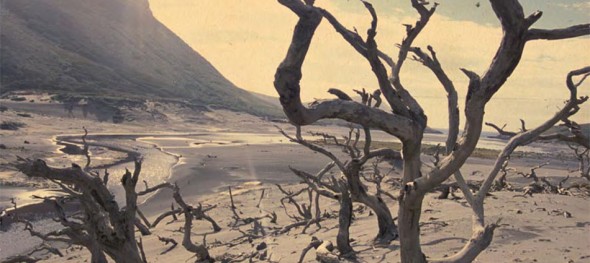 The physical copies of the Golden Dossier are gone; that’s the bad news. But the good news is that we’re posting an electronic archive of much of it here; you can download a PDF and print a copy for yourself if you like.
The physical copies of the Golden Dossier are gone; that’s the bad news. But the good news is that we’re posting an electronic archive of much of it here; you can download a PDF and print a copy for yourself if you like.
I should explain a little bit about the dossier. Most of it comes from the bulging files I’ve gathered after expeditions to places like Isla de los Estados, Argentina, the Jason Islands of the Falklands, the Aboriginal settlement of Kowanyama, Queensland, the Chatham Islands of New Zealand, and the Galapagos, and after I’d typed up the credits and lyrics on my grandfather’s old Coronet Super 12, I went through the files and tried to pick out documents and images that seemed to relate to the world of TGA.
The Mitchell River Mission ‘rules’, for instance, come from the 1950s, and an ill-fated attempt by missionaries to impose their idea of civilization on a group of people who had been living quite successfully in northern Australia for thousands of years. (“Boys” and “Girls”, in these documents, actually mean “Men” and “Women”).
The saga of the German aviator Gunther Pluschow, and his boat, the Feuerland, forms another section of the dossier…his story is too long (and too unbelievable) to recount here, but his dogged and whimsical fascination with Tierra del Fuego charmed me, and the Feuerland survived as a working farm boat in the Falklands into the 2000s; I lived on it during a bird survey in 1997. It’s since been bought and taken back to Germany; I think it’s in Hamburg somewhere, being restored. Poor Gunther died in Patagonia in 1931, falling out of his airplane after its engine died; its compass, with a great crack in it, is in the “End of the World Museum” in Ushuaia, Argentina, the southernmost town in the world.
The last image, of the man with the violin, is from the Falklands. His name was Andrew Peck, and he built the violin himself, out of matchsticks. I love the pride and humor in his eyes, and the care he’d taken to put on what were probably his best clothes, and of course the violin itself – it’s easy to imagine the hours of work that must have gone into it. To me, the image illustrates both the fragility and the resilience of human cultures, and the way that, even given the most minimal resources, we always strive – sometimes wonderfully, sometimes horribly – to make with our hands the worlds that we see in our minds. (JM)